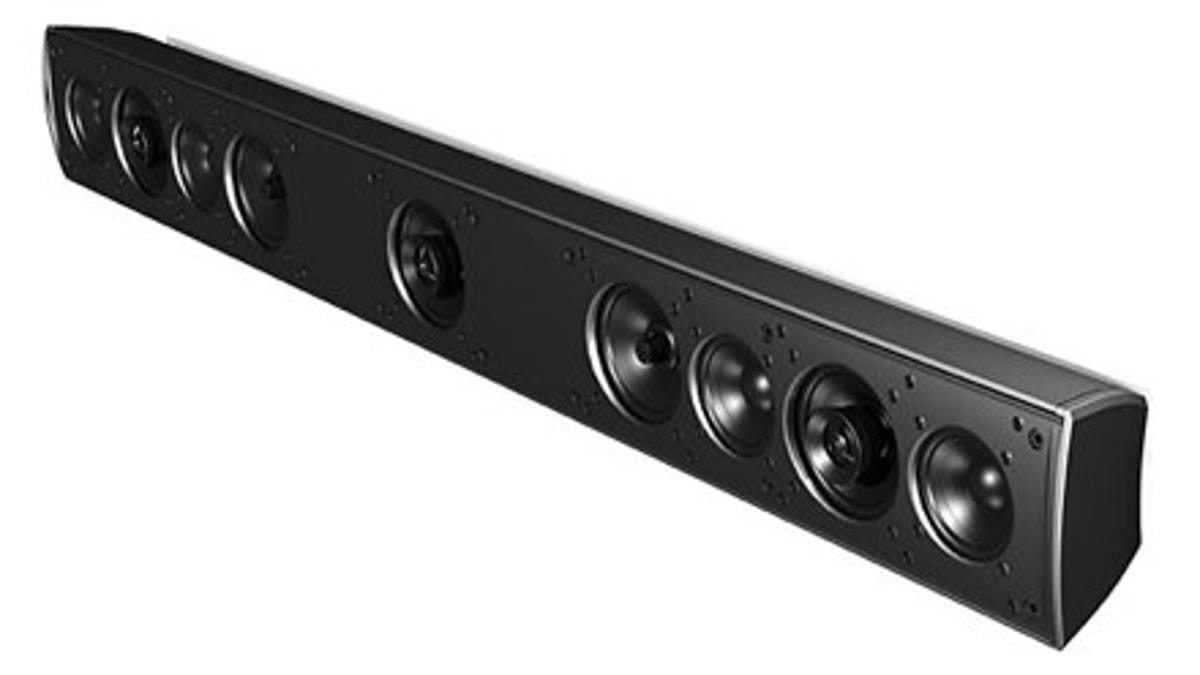CES 2008: Home audio wrap-up
We didn't expect a lot of big news from the industry's most traditional and conservative sector--and for the most part, that's exactly what we got.

You won't find a more institutionally conservative category in the consumer electronics space than home audio. More than any other industry segment, audio is one where technological advances tend to be lamented rather than celebrated, viewed with suspicion rather than embraced. And that's understandable: Subpar speakers are now passed off as good enough and used to listen to digital music, which is often highly compressed compared with CD or (even better) LP equivalents. And the music itself is coming from a dying recording industry, struggling to stay alive in the digital age, and often relegated to background music--fewer and fewer people are actually listening to the music anymore.
That's not to say that there weren't some home-audio highlights at this year's show. As predicted, single-speaker audio is taking off: Boutique manufacturers such as Polk Audio and Definitive Technology are turning their considerable expertise to single-speaker, as are mainstream names like Philips and Samsung. It's not totally new, of course--plenty of options already exist--but the clear desire for consumers to have a décor-friendly audio component to match their flat-screen TVs is undeniable.
One of the attractions of single-speaker units is the desire to cut down on the speakers, and the resulting speaker wire snaking throughout the room. The other alternative is going wireless altogether. It seemed like wireless speaker technologies were everywhere in 2007, with Neosonik's being the most impressive. The company's been offering peeks at its wireless speaker technology for the past couple of years, but it's now pledging to begin delivering actual product before the end of 2008. The company hopes to license its technology to other manufacturers under the Airpower moniker--but with so many nascent competing standards, it'll be quite a while before we see a Bluetooth-like standard in this arena.
Another carry-over from previous years was the complete dominance of the iPod. It's getting nearly impossible to find a home-audio product without an iPod dock. But unlike the bulky outboard docks of years past, manufacturers are integrating the dock directly into the main chassis of their products: all of Panasonic's 2008 home-theater-in-a-box systems have a nifty fold-down iPod dock built directly into the main head unit (as do JVC's P-Series TVs). Speaking of integration: Panasonic followed Samsung's lead by delivering an HTIB with a built-in Blu-ray player. And given that format's recent tailwind versus the increasingly struggling HD DVD, that's a trend that will only accelerate.
Needless to say, the iPod isn't the only way to listen to digital music. There are online services such as Rhapsody and Pandora, plus thousands of free Internet radio stations--not to mention the gigabytes of songs sitting on your computer's hard drive. And that's why Logitech's new Squeezebox Duet is so appealing. The Wi-Fi-enabled system lets you access all of those musical options from an iPod-like remote that fits in the palm of your hand. But unlike Apple's ubiquitous music box, you hear the resulting music through the big speakers of your home stereo (to which the networked Squeezebox base station is attached). It's not a new concept--see the
Of course, that's all the mainstream stuff. For the real nitty-gritty of the CES home-audio experience, you need to go beyond the main CES show floor and hit the Venetian. The high-end guys are camped out in the upstairs suites, as well as the Sands Expo Center in the bowels of the hotel (right next to the porn show, in fact). There you'll find some of the more exotic, expensive, elaborate, and downright amazing audio products. It's too bad the audiophiles are exiled to the Sands--because spending just a few minutes with them will inevitably give you an insight into true music appreciation. Inevitably, these are passionate folks who truly love their work, and want to share an experience--not just sell you a product. And that's something that CES could use a lot more of.

